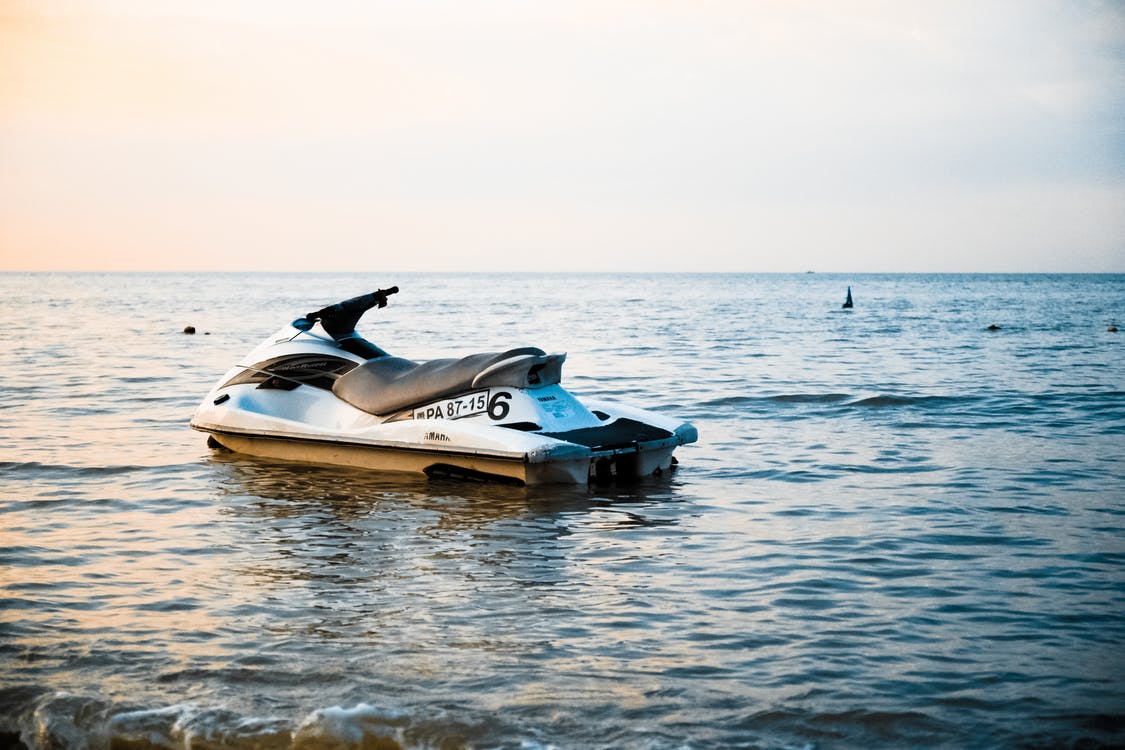So, you’ve bought your first jet ski. Perhaps you even took the first ride, got excited, experienced how amazing riding the waves can be… But what do you do next? Get responsible for maintaining your PWC, of course.
Your small craft needs a lot of care to work perfectly all the time, and it’s never a good idea to neglect the maintenance. However, simply reading the manual doesn’t always help – and you need to seek more information. That’s why we’ve prepared a few pieces of advice on taking care of your jet ski. Want your personal watercraft to perform its best whole season long? Read on!
1. Clean It Properly
The first step to maintaining your jet ski is knowing how to clean it properly. And no, riding the waves doesn’t mean it’s clean already. Moreover, when you’re enjoying the water (it doesn’t matter whether it’s fresh or salty), sand, salt, weeds, and shells can get into your engine, so the first thing you need to do after every ride is flush it. It’s pretty easy – there’s a special hose connector for interior cleaning in most modern jet skis. Just make sure to read the manual before flushing!
After every ride, wash your jet ski to avoid corrosion. Rinse it firstly, and then use warm soapy water and a sponge to clean it. Salt and sand can collect in many areas where the hose can’t get, like underneath the seats or beneath the fuel tank – clean them by hand.
2. Use a Cover
If you’re storing your Jet Ski, WaveRunner, SeaDoo outside, make sure it’s protected by a seadoo cover. This shields it from damaging and preventing more issues from developing. After each ride, simply place the cover once you’ve finished cleaning and flushing it.
3. Take Care of Engine Fluids
Every time you get your jet ski out of storage, make sure it’s fueled – and this doesn’t only mean to add the fuel when needed. For example, if you store your watercraft with fuel in the engine but without a fuel stabilizer, remember to add it and a fuel cleaner before starting the engine. And you have to get rid of unused or outdated fuel each year. Also, different types of jet skis need different solutions: older ones require premixed oil and fuel, whereas modern ones have separate areas for them.
And while we’re on the topic, do you know anything about changing the oil in a jet ski? It’s an important part of maintaining your watercraft, but it’s not actually as hard as it sounds. You actually can do it by yourself – and it’ll be cheaper and faster than looking for someone who’d do it instead of you.
4. Check for Damage
For safety reasons, you have to check your jet ski for damage every time before going into the water. However, it will be only positive if you do this after each ride as well. You don’t have to do a thorough inspection every time (but once a year would be nice) – simply look over all of the wires, engine, and other areas. Make sure everything’s right and nothing is out of place, broken, or missing. Look for any loose or damaged parts and any signs of damage or extensive wear.
If you do this every time, it’ll be extremely easy to notice if something’s wrong – and if you don’t, damage can be building up, making it more and more unsafe to get on the waves. One important note to sum it up: never start your engine if you can smell fuel – it can be a sign of a leak, loose cable, or even a damaged fuel tank.
5. Remember about Annual Tasks
Even if you’re cleaning and checking your jet ski after every ride, it’s still important to remember about tasks, which have to be done rarely. At least once a year, make sure to change the engine oil and filter, check fuel, replace the pump oil, lubricate the parts, and so on. If you don’t know how to do it yourself or don’t know what exactly has to be done, it’s always an excellent idea to book a service.
6. Store It Properly
Yes, storing the jet ski can be complicated, too. However, there are a few tips for maintaining your craft in a perfect state. Firstly, get a PWC lift, so you won’t have to store it in the water – it can create damage build-up. And a lift makes it easier to clean and flush your jet ski! Secondly, if you want to store your craft outdoors, put a cover on it. This way, it’ll be protected from surface-level damage, and you’ll prevent serious problems from occurring.
And finally, when winterizing your jet ski, make sure to clean it thoroughly, drain all the water from the engine, add a fuel stabilizer to the fuel, lubricate metal hinges and handles, and store it in a safe place.
It’s Not That Hard
Taking care of your jet ski only seems challenging, while it’s not actually that hard in reality. All you need to remember is clean your craft, know how to replace the engine fuels, check for damaged parts, and store it properly. The main idea here is to be watchful and careful – read the manual, make sure you know what exactly your jet ski needs, and never get on the water if you’re not sure everything is working perfectly.

